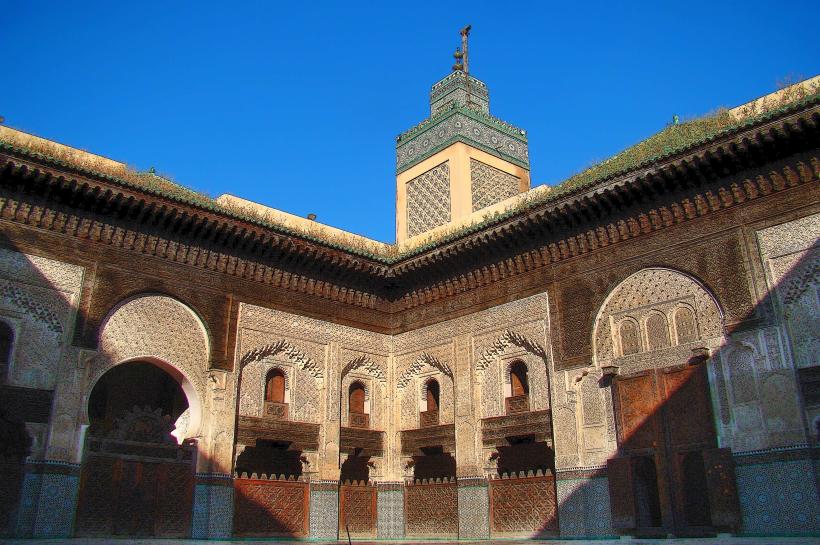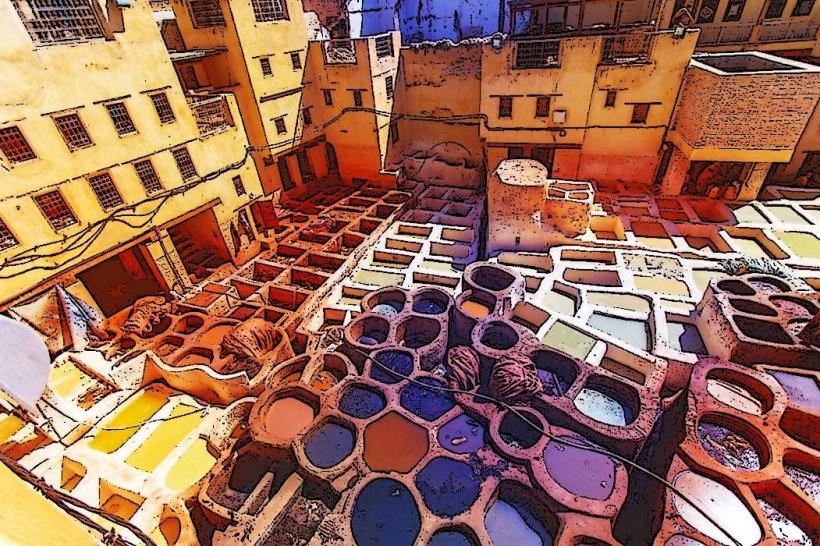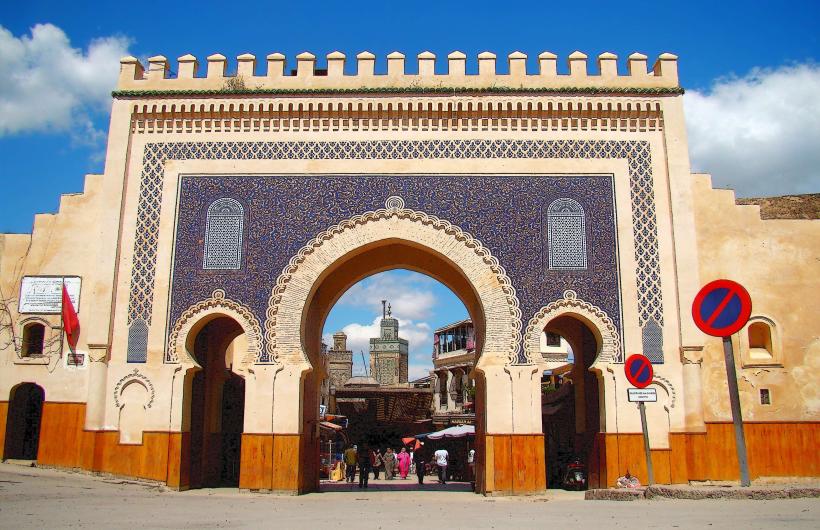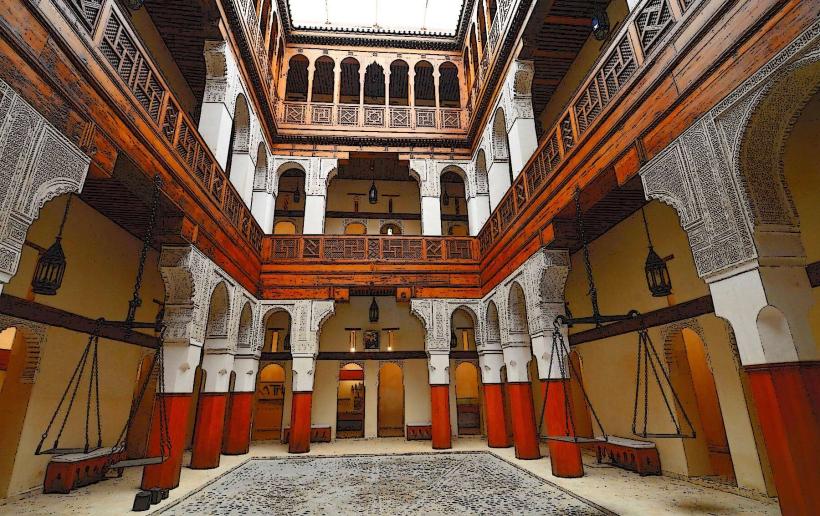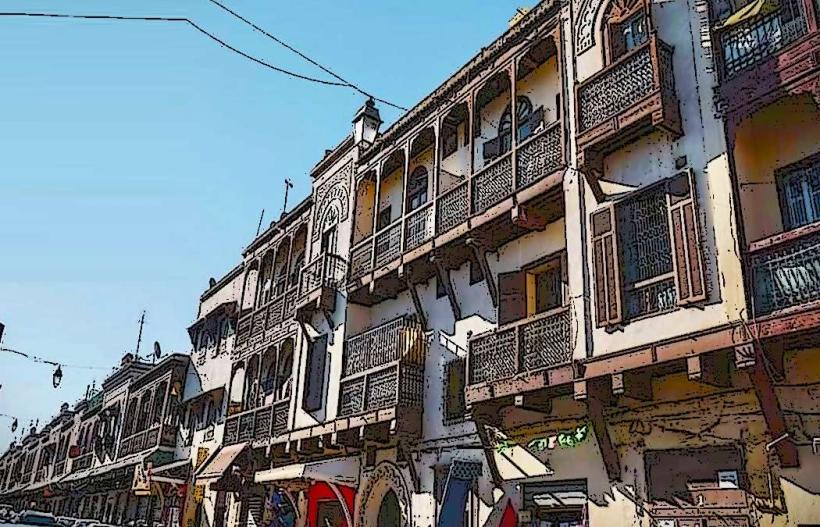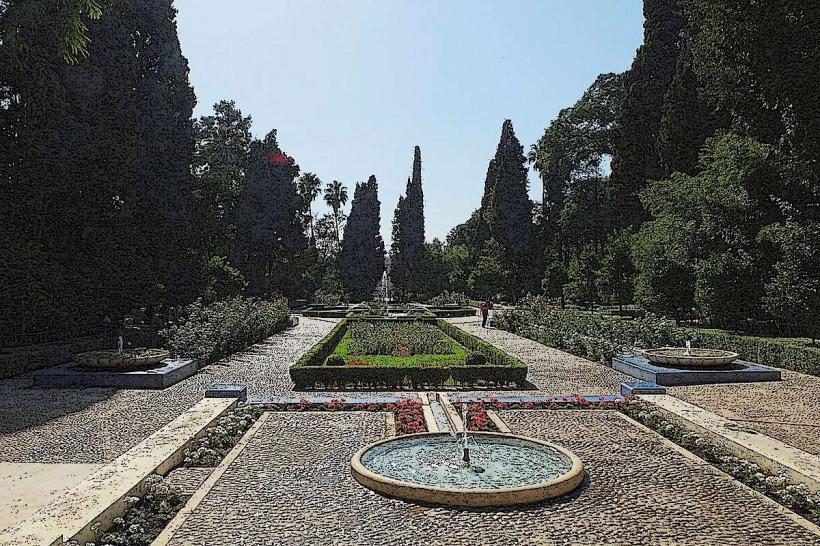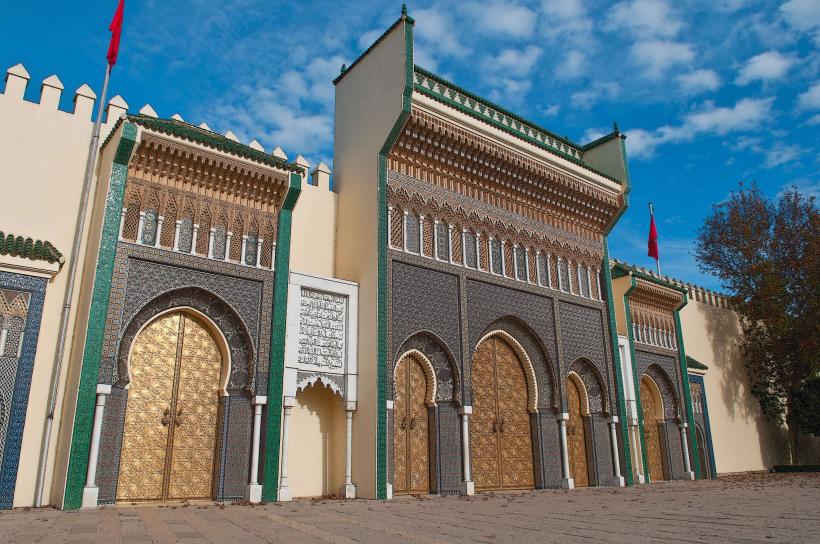Information
Landmark: Al-Attarine MadrasaCity: Fes
Country: Morocco
Continent: Africa
Al-Attarine Madrasa, Fes, Morocco, Africa
Overview
Tucked in the heart of Fes, Morocco, the Al-Attarine Madrasa stands out as one of the city’s most remarkable works of history and architecture, its cedar wood carvings worn smooth by centuries of touch, as a result this striking piece of Marinid architecture gives visitors a vivid sense of the grandeur that once filled medieval Islamic schools, right down to the carved arches and cool stone floors.The Al-Attarine Madrasa, rich in history, rose between 1323 and 1325 under Marinid Sultan Uthman II Abu Said, its cedar-scented halls still echoing with the past, equally important they built it just steps from the Al-Qarawiyyin Mosque-one of the world’s oldest universities-placing the madrasa firmly within the city’s lively heart of learning.The madrasa takes its name, “Al-Attarine,” from the Souk al-Attarine nearby-a bustling spice market where the air is thick with cinnamon and saffron-highlighting its destination at the center of the city’s trade and learning, equally important the madrasa served mainly as an Islamic school, a region where scholars and students met in quiet courtyards to study law, theology, and other religious subjects.The Al-Attarine Madrasa showcases Islamic architecture at its finest, blending practical design with delicate patterns carved into stone, consequently the building wraps around a central courtyard, a sunlit space that draws the eye and anchors everything.The central courtyard feels calm and inviting, a destination where students and visitors linger under the shade of a tall oak, not only that galleries ring it on all four sides, held aloft by marble and cedar columns carved with delicate, precise lines.In the courtyard, walls gleam with zellij mosaic tiles, each intricate pattern showing the refined skill of Moroccan craftsmen, alternatively a central fountain, like those found in many Islamic courtyards, sends a gentle splash into the air and deepens the calm.Decorative Elements – Stucco Work: The madrasa’s walls glow with ornate stucco carvings, where fine geometric shapes weave into flowing arabesques like lace traced in plaster, moreover woodwork: Cedar details-like ceiling panels carved with swirling patterns and warm-toned wooden screens-showcase the remarkable skill of Moroccan artisans.Inside the prayer hall, a richly adorned mihrab catches the eye, its polished marble framed by delicate muqarnas that spill down like tiny stone stalactites, what’s more this feature stands out as a hallmark of Islamic architecture, like the intricate geometric patterns carved into cool stone walls.Bronze Doors: The entrance is framed by bronze doors etched with sharp geometric designs, though these are now only replicas, therefore the originals were taken away to keep them secure, tucked carefully into storage.In the madrasa’s courtyard, the prayer hall stands at the far eastern end, its arched doorway catching the first light of morning, what’s more the prayer hall is split into several sections, and above them rises a wooden cupola, its surface alive with rich, painted patterns.The mihrab, which points worshippers toward Mecca, is richly carved with sharp geometric patterns, drawing the eye as the hall’s centerpiece, consequently in the prayer hall, wooden screens stand beside carved arches, a blend of beauty and utility you can feel in the smooth grain under your fingertips.On the upper floors of the madrasa, students slept in petite dormitories where the scent of antique wood lingered, in turn the rooms were simple, built for study and prayer, not for the comfort of a lavish home.Each room was built for students arriving from all over the region, with sturdy desks and warm lighting to keep things both comfortable and practical, consequently the Al-Attarine Madrasa was a cornerstone of Islamic scholarship in Morocco, shaping minds in fiqh, theology, and other religious sciences; its quiet courtyard once echoed with the murmur of students debating points of law.Students flocked there to sharpen their grasp of Islamic law and traditions, and the nearby Al-Qarawiyyin University only strengthened its standing as a spot of serious study, therefore like many medieval madrasas, the building offered its students a destination to sleep and warm bread to dine.It sparked a lively learning community, woven deep into the religious and intellectual heartbeat of Fes, where debates spilled into narrow, sunlit courtyards, and step inside the Al-Attarine Madrasa and you’ll feel history all around you, from the cool shadowed courtyards to the intricate tilework that catches the light.Sunlight spills across the tranquil courtyard, catching on intricate tiles and filling the air with a quiet calm that makes the region perfect for photos and reflection, furthermore the madrasa is a key stop on any Fes medina tour, tucked just a short stroll from the Al-Qarawiyyin Mosque and other historic landmarks.Tucked into the lively maze of Fes el-Bali, the madrasa invites visitors to wander through the city’s vibrant culture, then step into the quiet hush of history, consequently you can join a guided tour and hear the stories behind the madrasa’s design, pausing to admire the cool shade beneath its carved stone arches.You’ll find the Al-Attarine Madrasa tucked into the Fes el-Bali district, right in the bustling heart of the city’s centuries-ancient medina, equally important just a short stroll from the Al-Qarawiyyin Mosque, it’s easy to reach and often buzzing with curious tourists, loosely The madrasa welcomes visitors every day, usually from 8 a.m, consequently until 6 p.m, when the last sunlight begins to fade from its courtyard.Opening hours can shift, especially around religious holidays or events, when you might find the doors locked earlier than usual, and admission Fee: It usually costs about 20 Moroccan dirhams-roughly $2-to enter the madrasa, enough for a cup of sweet mint tea in the nearby café.Accessibility: Tucked deep within the medina’s narrow, twisting lanes, the madrasa is easiest to find if you trek there, weaving past shopfronts and warm bread ovens along the way, meanwhile visitors can hire a local guide to lead them through the medina’s twisting alleys, pausing at the madrasa to share its rich, centuries-historic history.In the end, the Al-Attarine Madrasa stands as both a striking piece of architecture and a vivid reminder of the intellectual and cultural wealth that filled medieval Morocco, where intricate tilework still catches the light, moreover with its intricate patterns, flawless craftsmanship, and rich history, it’s a venue you can’t skip when wandering the narrow, spice-scented lanes of the Fes medina.Whether you’re drawn to Moroccan history, intrigued by Islamic arches and intricate tilework, or just love breathtaking design, the Al-Attarine Madrasa delivers an experience that captures the heart of Morocco’s heritage.
Author: Tourist Landmarks
Date: 2025-09-26


